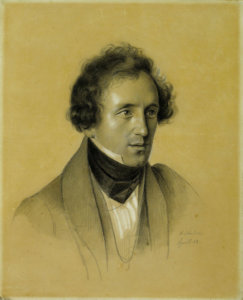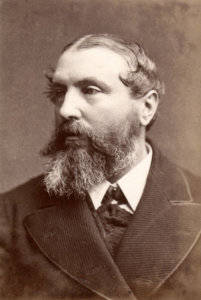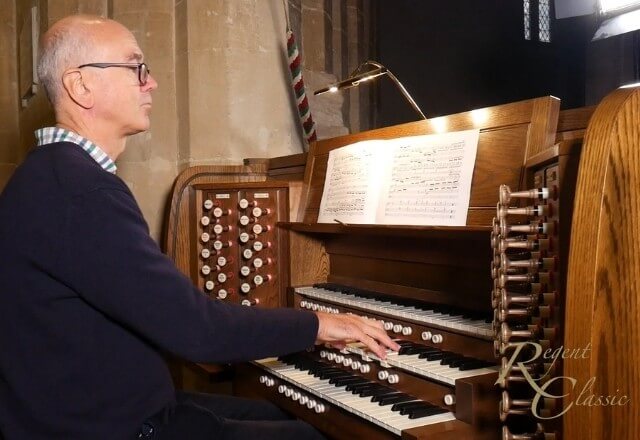Mendelssohn’s oratorio Paulus (based on the life and conversion of St Paul) was popular in its day, and still regularly sung in Germany. In England these days it’s less commonly performed, but we may know a few choruses such as ‘How lovely are the messengers’, for example.
Mendelssohn’s Overture to St Paul
The overture is a splendid piece of music, in the bright key of A major, arranged here for the organ by the eminent Victorian recitalist, W. T. Best. It has a theme based on the chorale ‘Wachet Auf’, or ‘Sleepers Wake’, often sung in churches during Advent, in which all are extolled to remain alert for the coming of the Bridegroom (the Christ or Saviour in this context).

Mendelssohn treats the theme in his typical overture fashion, starting out with a broad and slow statement, followed by fugal sections with lots of rolling semiquaver passages, accompanied by occasional bold soundings of the chorale in different voices. It builds to a glorious peroration with all guns blazing, so to speak, having a number of features in common with the first movement of his 3rd organ sonata.
This overture even incorporates the device of gradual increases in speed, also found in the sonata, designed to deliver a sense of developing excitement and urgency as the piece progresses.
Arrangement for the organ by W. T. Best
The arranger for the organ in this case is none other but the great Victorian recitalist, W. T. Best.

Best was a splendid character, whose pedal technique was unrivalled in his day, and would be the chap you’d probably go to for an opening recital on a new instrument, as he’d do an excellent job and show off all the tone colours in virtuoso style. He arranged for the organ a large number of non-organ works by the classical masters, as these were very popular in recitals of the day, often being preferred by the general public to ‘organ music’.
Pieces such as this are not quite so commonly included in organ recitals these days (which have been in danger of getting too serious or esoteric for the non-specialist) but there is thankfully something of an emerging revival of interest in orchestral arrangements.
Challenges for organists’ in Best’s arrangement of Overture to St Paul
There are some considerable challenges for the organist in Best’s arrangement of the St. Paul overture.
The main ones are the semiquaver passages, which are often in thirds and sixths, and sometimes in both hands at the same time, plus some tricky pedal runs of a similar nature (but not double thirds, thank goodness!), which take a lot of practice.
A few simplifications can be done in places, as not all the notes of the double thirds and sixths are entirely necessary at all times, but it pays to do the work at the outset on detailed fingering, and sharing of parts between hands. The rewards are then considerable, and this is a good piece to have under one’s belt for recitals, or for an Advent voluntary.
The movement can be executed adequately on a two-manual instrument, but a third manual is indicated in places, and might allow additional variety of timbre at a couple of points.
The Regent Classic Organ and More Videos
This video was recorded in St Mary’s Witney where we installed a Regent Classic Organ in 2015. The bespoke organ at St Mary’s Witney has three manuals and an enlarged specification, with a separate choir division in the chancel.
Francis Rumsey, the organist at St Mary’s, and a consultant to Regent Classic, shares some of the recordings he’s made. These videos demonstrate the versatility and tone quality of the organ, as well as offering some interesting repertoire.
- Percy Whitlock: Chorale Prelude on ‘Werde Munter’
- Elgar (arr. Martin): Imperial March, Op. 32
- J.S. Bach: Sonata No. 5, Largo (BWV 529)
- Alfred Hollins: A Trumpet Minuet
I’m a retired academic, with a background in music and audio engineering. I’m currently a consultant for Viscount & Regent Classic Organs, as well as being a freelance organist, including a role as organist/choirmaster at St Mary’s, Witney. I sing bass with Oxford Pro Musica Singers and the Cathedral Singers of Christ Church, Oxford.


